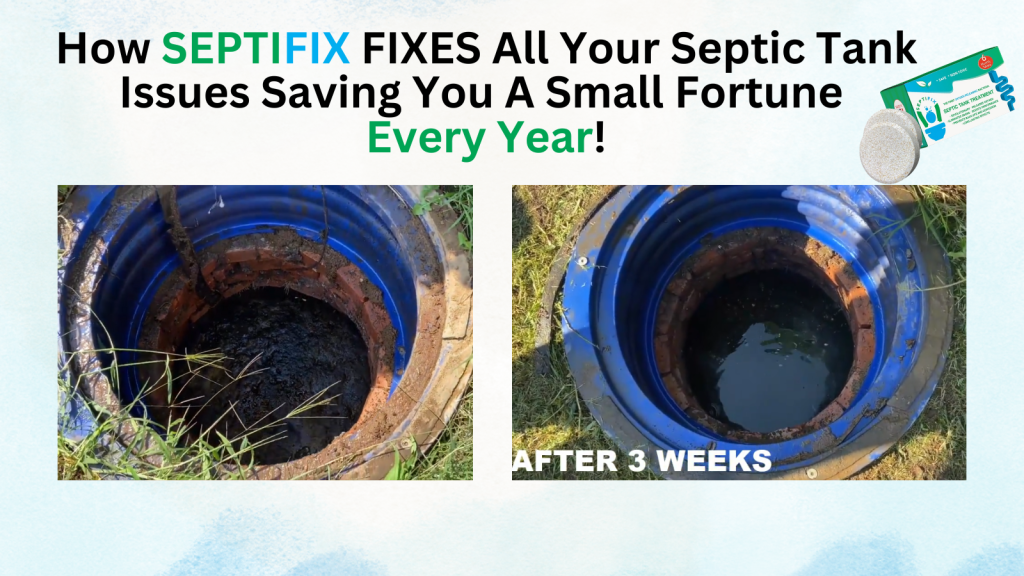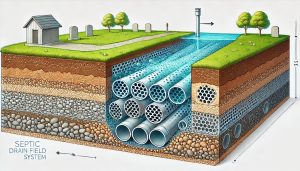Installing or repairing a septic system can be a major expense for homeowners. Understanding the factors that affect septic system costs can help you budget more accurately and make informed decisions. From local regulations to the type of soil on your property, many variables influence the final price tag. In this article, we’ll break down the biggest cost drivers and explain how each one affects your bottom line.
Table of Contents
- Key Factors That Influence Septic System Costs
- Secondary Cost Considerations
- Regional Price Variations
- Contact Info and Resources
- Conclusion: Budget Wisely by Knowing What Impacts Septic Costs
- Septifix: The Future of Septic Care
- Septic Permit Links by State
Key Factors That Influence Septic System Costs
1. System Type and Design Complexity
The most obvious cost factor is the type of septic system you install. Basic gravity-fed systems tend to be the least expensive, while aerobic treatment units (ATUs) or mound systems are more complex and therefore more costly. For example:
- Gravity systems: $3,000–$8,000
- Mound systems: $10,000–$20,000+
- Aerobic systems: $7,000–$15,000
These prices reflect the system’s complexity and the equipment required. Some regions, especially those with high water tables, may require more sophisticated designs to protect groundwater.
2. Tank Size and Material
Larger households need bigger septic tanks, which naturally increases cost. A standard tank for a 3-bedroom home might be 1,000 gallons, but if you have a large family or additional fixtures (like a jetted tub), a 1,500-gallon tank may be necessary.
Tank materials also matter:
- Concrete tanks are durable but heavy and costly to install.
- Plastic or fiberglass tanks are lightweight and cheaper, but may be more vulnerable to damage.
Expect to spend $500–$2,000 more for a larger or premium tank.
3. Soil Type and Site Conditions
Your property’s soil composition can significantly affect the total cost. Soil testing, also known as a percolation test (perc test), determines how well the soil absorbs water. Clay-heavy or poorly draining soil may require engineered solutions like sand filters or elevated drain fields.
If your land has a high water table, bedrock, or steep slopes, contractors may need to do additional excavation or use alternative system types, driving costs higher. The added labor and material can increase costs by $2,000–$10,000.
4. Permits and Local Regulations
Don’t forget about local permitting fees and inspection requirements. Depending on your county or state, these can range from a few hundred to over a thousand dollars. Some areas may require multiple inspections during installation, while others might require environmental impact assessments or engineering reports.
States like Florida and Texas often have stricter codes due to environmental concerns, especially in wetland or coastal areas. This can add time and expense to your project.
Tip: Always check with your local health or environmental department before starting any work.
5. Labor and Installation Complexity
Labor is another major cost component. In regions with higher labor costs or union regulations, you’ll pay more for excavation, system design, and installation.
Other factors that affect labor include:
- Site accessibility (is the tank area easy to reach?)
- Need for rock blasting or tree removal
- Seasonal conditions (frozen ground = higher labor)
Installation complexity alone can add $3,000–$5,000 or more to your project.
Secondary Cost Considerations
Ongoing Maintenance and Pumping
Many homeowners forget that owning a septic system means ongoing maintenance. Most systems need pumping every 3–5 years, depending on usage. This typically costs between $300–$600 per visit.
Advanced systems like aerobic treatment units require more frequent servicing and component replacement. Maintenance costs can vary from $100–$500 annually, depending on the system type and region.
Repair or Replacement Costs
If you’re dealing with a failing drain field or a cracked tank, repair costs can sneak up fast. Small fixes like replacing baffles or risers may cost just a few hundred dollars, but full drain field replacements can run $5,000–$15,000.
That’s why it’s so important to budget for inspections and regular maintenance—prevention is always cheaper than repair.
Regional Price Variations
Where you live makes a difference, too. Here are a few examples:
- In rural areas of the Midwest, systems tend to be cheaper due to lower labor costs and looser regulations.
- In coastal or mountainous regions, expect higher costs due to soil challenges and environmental requirements.
- Northeast states often have older infrastructure and tighter zoning laws, which can make installations more complex.
Use local terms like onsite wastewater systems, private sewage systems, or leach field setups when researching in your area—they’re often used interchangeably with “septic system.”
Contact Info and Resources
To learn more about local regulations, pricing, and licensed installers, check out these resources:
- EPA Septic Smart Program – Tips and educational resources for homeowners
- National Onsite Wastewater Recycling Association (NOWRA) – Find certified professionals near you
- [Your State Health Department Website] – Look for septic permitting requirements and approved system types
- [Local County Environmental Office] – They often provide perc test requirements and approved installer lists
- OdorFreeSeptic.com Guides – Helpful homeowner tips and troubleshooting advice
Conclusion: Budget Wisely by Knowing What Impacts Septic Costs
Understanding the factors that affect septic system costs empowers you to make smarter decisions when installing, upgrading, or maintaining your system. Key cost drivers include system type, tank size, soil quality, local codes, and labor rates. By doing your research and working with licensed professionals, you can avoid surprises and ensure your investment lasts for decades.
Ready to install or upgrade your septic system? Get multiple quotes, ask about maintenance packages, and never skip a soil test—it’ll save you thousands down the line.
Septifix: The Future of Septic Care







